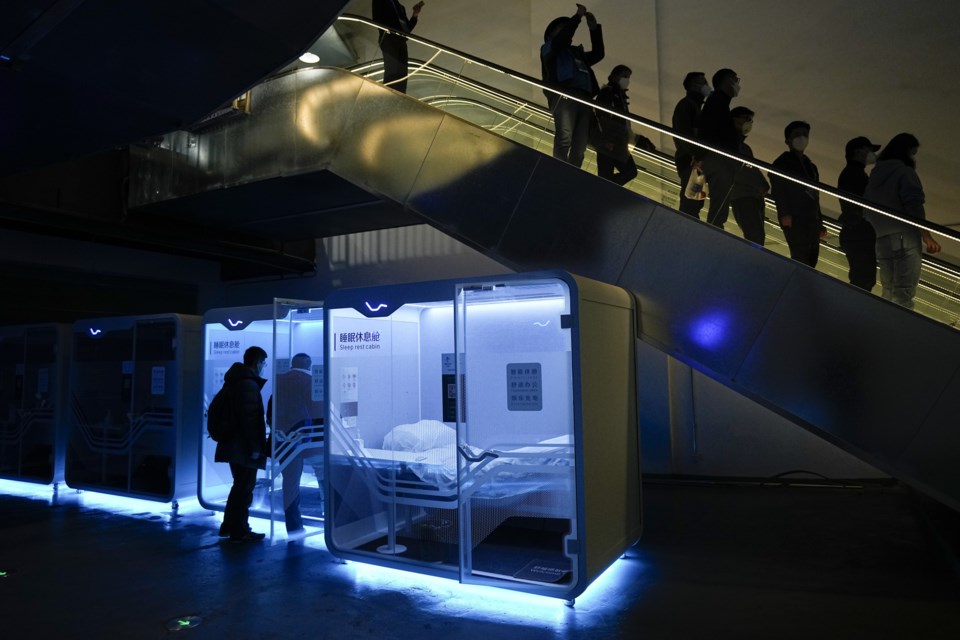BEIJING (AP) ÔÇö With nowhere really to go, journalists inside the Beijing Olympics bubble are encouraged to sleep on the job.
They can't visit the village rooms where competitors are staying, but they can try out the high-tech beds athletes are sleeping in. Several corridors at the main media center are lined with ÔÇťsleep rest cabins," small pods that open with a QR code and contain beds.
The beds can be adjusted by remote control and even have a ÔÇťzero-gravity modeÔÇŁ meant to reduce stress on the body ÔÇö you don't quite float, but it's pretty comfortable.
Some journalists nap in the cabins, while others in search of a quiet ÔÇö and private ÔÇö place to write bring their computers.
Zhao Yufeng, a spokesperson for cabin manufacturer Keeson Technology Corp., said 30 to 40 people a day have been using them so far.
ÔÇťWeÔÇÖve placed sleeping cabins here for journalists to give an environment to work, rest and get relaxed," she said.
Not everyone was excited about napping in a see-through box in full view of anyone walking by, though.
Guido Santevecchi, an Italian journalist, said the pods reminded him of something you might find in a psychiatric ward.
Given the already heavy potential mental health toll of living inside the Olympic bubble with major restrictions on movement, ÔÇťI would rather avoid entering there," he said.
___
Associated Press journalist Chisato Tanaka contributed to this story.
___
More AP Olympics: https://apnews.com/hub/winter-olympics and https://twitter.com/AP_Sports
Cara Rubinsky, The Associated Press


